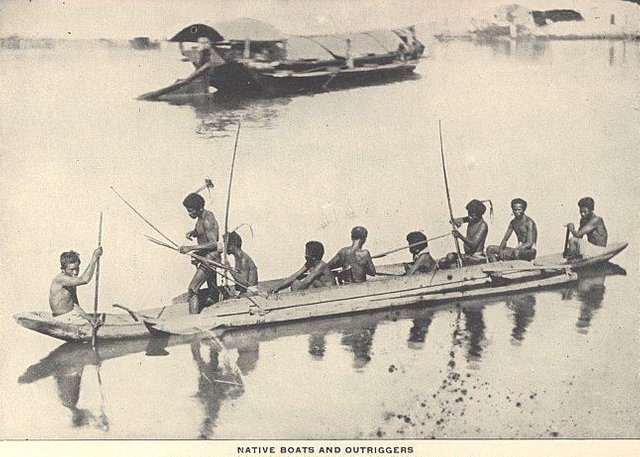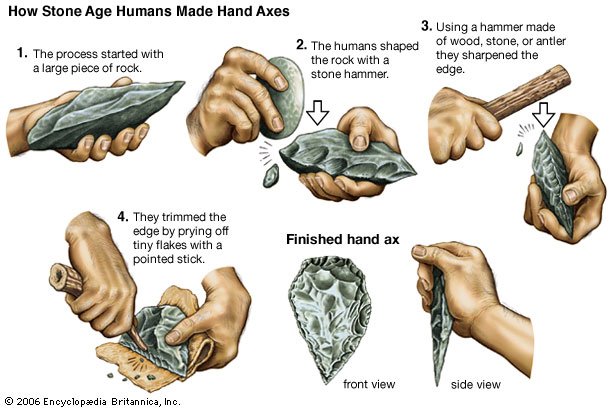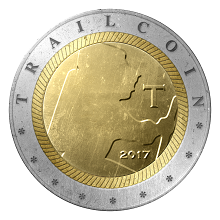The Proliferation of Austronesians in the Philippines
The Austronesians in the Philippines

Image Source
The First Proliferation Wave of Austronesian
Hoabinhia and Old Melanesia are important in understanding the two theories about the root and proliferation of Austronesians, the root of Filipinos, Indonesians, Malayians and to those who live in the Pacific such Micronesia, Melanesia and Polynesia. Hoabinhia is the standpoint of South China and Northern Vietnam, and Old Melanesia is known as Indo-Malaysia which includes Philippines. According to the first and widespread theory, Austronesians originated from Hoabinhia, transferred and spread towards Taiwan before going to the Philippines.
From the Philippines, they then headed to Pacific, Indo-Malaysia and Madagascar. The second theory on the other hand, tells that the Austronesian originated from the Old Melanesia particularly in the region of Southern Philippines and East Indonesia and from the Philippines, they then spread towards Taiwanm Indonesia, Micronesia and Polynesia. Because we were focus on the gathered data, we believed on the first theory.
Austronesian Culture in the Philippines
The arrival of Austronesians in the Philippines matches in the time of Neolithic Age also called as New Stone Age. A period were human technology started to develop which started about 10,200 BC according to the ASPRO chronology. Smoothed furniture stone is the trend during this time. Austronesian use this stones in making marine vessels that were by then to transfer from one place to another. The typical tools use to make a boat is coming from giant clams. Since austronesians came from Asian places, it's not surprising that the common food during their time are root vegetables.
The Second Proliferation Wave of Austronesian
It was estimated that around 1,500 BC, Austronesian arrived in Polynesia, and 4,000 BC they started their migration towards the Philippines, while 4,500 BC they moved towards Indo-Malaysia. Between 4,500 BC and 1,500 BC, Philippines was the second proliferation target of Austronesians. In Duyong Cave in Palawan, archeologist found a skeleton that buried denoting a posture characteristics of a fetus, with an estimated age of 2,800 BC.

Image Source
Beside is the furnitures and tools made up of giant clams which on the right time it became typical in Polynesia. They also found a lime that were use in chewing, a proof that way back 2,800 BC, Autronesian in the Philippines are already doing chewers. They also found shard of pots with red streak in Sulu just like the pots of Lapita in Polinesia.
New Austronesian Culture
There are two characteristics during this time: the appearance of rice and the burial inside a jar around 1,500 BC. Culturing rice has few implications, first is Austronesians will be force to establish a permanent habitat. They need to watch over their plantation to take care of it. Rice plantation requires a progressive system of irrigation and farming. This will be supported by the arrival of metal in the next era. The burial inside a jar is also a characteristics of new Austronesian culture in the Philippines. Two burials happen in this kind of burial system. First, they buried the dead body to decompose the flesh of the dead person. On the second part, the bones will be cleaned and placed it inside a jar and buried it again.

Image Source
Source:
History of the Philippines
By: Zeus A. Salazar
Hello @juvyjabian,
Congratulations! Your post has been chosen by the communities of SteemTrail as one of our top picks today.
Also, as a selection for being a top pick today, you have been awarded a TRAIL token for your participation on our innovative platform...STEEM.
Please visit SteemTrail to get instructions on how to claim your TRAIL token today.
If you wish to not receive comments from SteemTrail, please reply with "Stop" to opt out.
Happy TRAIL!

Nice post about history !
Thanks @happyphoenix
This post has been ranked within the top 25 most undervalued posts in the first half of Mar 20. We estimate that this post is undervalued by $6.90 as compared to a scenario in which every voter had an equal say.
See the full rankings and details in The Daily Tribune: Mar 20 - Part I. You can also read about some of our methodology, data analysis and technical details in our initial post.
If you are the author and would prefer not to receive these comments, simply reply "Stop" to this comment.
Super post!